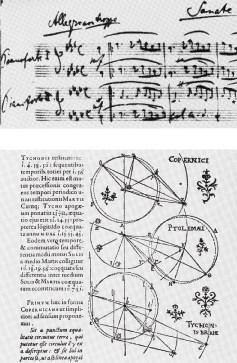| others must be excluded from the composition. Sometimes the fit is recognized by established rules of form and structure, but usually there are no formulated rules and the synthesis is holistic and intuitive, but far from arbitrary. The artist, consciously or unconsciously, decides that some things are mistakes and must be done differently. The sure hand of Picasso or of Fermi makes few mistakes, but, more commonly, constant decision-making and choosing between alternatives is a characteristic of both artistic and scientific endeavors. The patterns of patterns created by artists are deemed valid, as are physical theories when, often after many false starts, they succeed in concordantly combining the multiple elements of nature and experience. Artists as well as scientists must transform or reformulate observed patterns in order to be able to perceive this concordance. Both artist and scientist combine elements of experience which no one else had conceived of as belonging together. | The works of artists are valid because they lead, as do physical theories, to the revelation of things that are happening, but which have not previously been perceived. In art, these revelations frequently apply to relationships and feelings within ourselves, to those patterns which involve a sense of order and disorder, or feelings of peace and anxiety, or even meaning and purpose, the introspective parts of reality. These relationships are not contained in Maxwell's or Dirac's equations, but they are not forbidden by them. Works of art not only enable people to form associations among previously experienced feelings, but they also generate new feelings from the juxtaposition of familiar ones. Artists and scientists can observe the same patterns, but they frequently arrive at complementary syntheses of them. Most of us, for example, were intrigued as adolescents by the thought that love was merely endocrine chemistry. Certainly the poetic and the chemical descriptions of love refer to the same reality, but endocrine chemistry and falling in love cannot be bridged by any overlapping set of perceptual experiences. The appropriate starting point for the model must be determined by the way in which a question is formulated. In general, the renditions of art and science share this complementarity. Within this framework, the confirmed emotional revelation of artistic composition establishes validity just as surely as the revelations of theories in physics. Both are surely required to fully know nature. The validity of art arises because through it we can recognize the way in which all the processes of nature, including those that arise within ourselves or that stem from other people, affect our consciousness and our emotional well-being. Art is not valid merely to decorate our surroundings with statues in the plazas of skyscrapers, any more than science is valid because it provides the conveniences of electric shavers. Surely they must both be 'required if we are to learn how to survive in a changing world - a world that we ourselves keep changing, but that would also change even if we were not here. | ||||
 | |||||